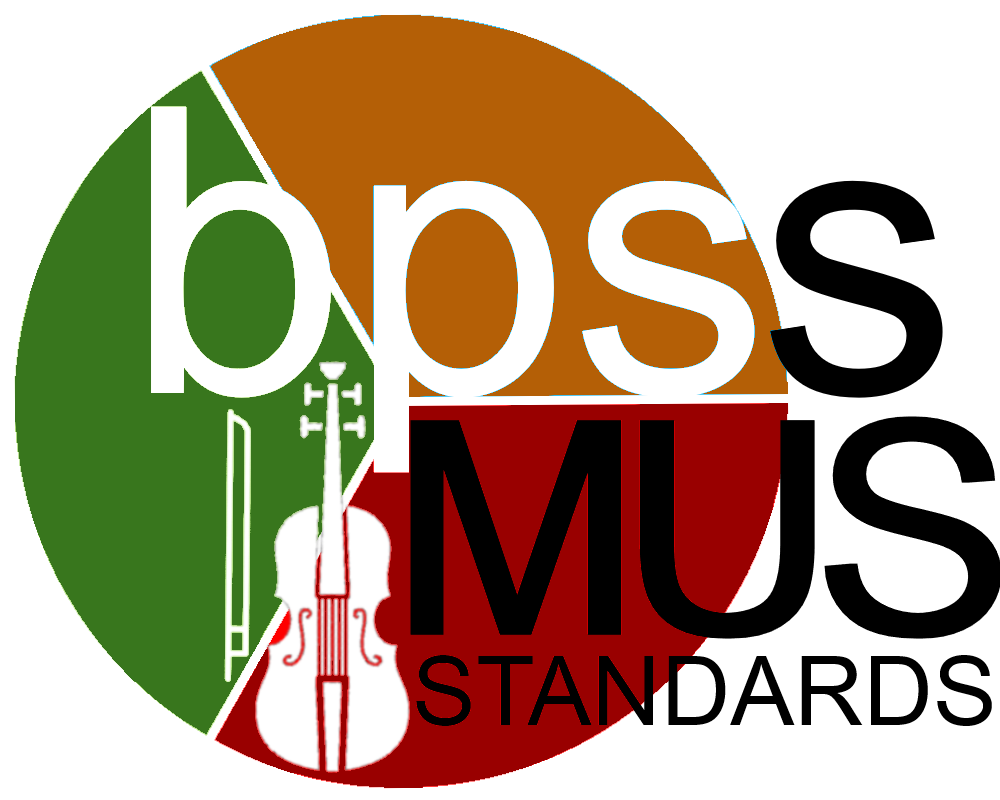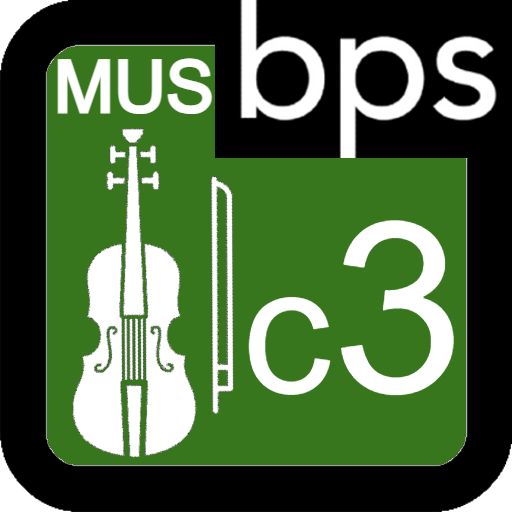MUS-HS.c3  MUS-HS.c3 MUS-HS.c3 Category  | (c3) Category 3: Artistic Skills and Knowledge
The elements that relate to the creative and expressive side of music-making, beyond mere performance, such as improvisation, performance with artistic understanding, etc.
|
MUS-HS.c3.A
Expressive Element | MUS-HS.c3.B
Historical and Cultural Elements | MUS-HS.c3.C
Evaluation of Music and Musical Performance |
|---|
| Students employ expressive elements of music to communicate abstract thoughts, ideas, and meaning; to share the depth of the human experience; and for self-expression and understanding. | Students perform music from a wide range of genres in a culturally authentic manner, reflecting the diverse nature of people, groups, and cultures found across the world and in the U.S.; performances demonstrate an understanding of historical and cultural contexts, and reflect stylistic traditions and practice. | Students evaluate and analyze music for executive skill, musicianship, and artistic considerations; evaluate and analyze the musical performances of themselves and others based on established criteria. |
CalculationsCategories are larger groups of related standards. The category grade is a calculation of all the related standards. Click on the standard name below each category to access the learning targets and rubrics/ proficiency scales for individual
standards within the category. |
|
MUS-HS.c3.A  | Chamberth Grade (MUS) Targeted String Standard (c3) Category 3: Artistic Skills and Knowledge (A) Expressive Elements
Students employ expressive elements of music to communicate abstract thoughts, ideas, and meaning, share the depth of the human experience, and develop expression and understanding.
|
 Proficiency Scale Proficiency Scale
Learning Targets
- 4.1 Students perform with consistent timbre and tone quality at all dynamic levels.
- 4.2 Students independently interpret and perform musical selections, applying approprieate dynamics, tempi, and timbre.
- 4.3 Students understand and perform with correct performance, practiced for selected repertoire.
- 4.4 Students understand and perform with correct performance, practiced for selected repertoire.
- 4.5 Students demonstrate artistic applications of vibrato.
- 4.6 Students use ornamentation, as appropriate to the performance/practice and conventions of the period and style.
|
|
MUS-HS.c3.B  | Chamberth Grade (MUS) Targeted String Standard (c3) Category 3: Artistic Skills and Knowledge (B) Historical and Cultural Elements
Students listen to, respond to, and perform music from a wide range of genres in a culturally authentic manner, reflecting the diverse nature of people groups and cultures across the world and in the United States, and performances demonstrate an understanding of historical and cultural contexts and reflect stylistic traditions and practice
|
 Proficiency Scale Proficiency Scale
Learning Targets
- 4.1 Students listen to selected music from diverse cultures and musical eras.
- 4.2 Students analyze and classify music according to style, composer, and genre.
- 4.3 Students perform a comprehensive repertoire of eclectic styles in a manner that reflects understanding of cultural and stylistic traditions.
|
|
MUS-HS.c3.C  | Chamberth Grade (MUS) Targeted String Standard (c3) Category 3: Artistic Skills and Knowledge (C) Evaluation of Music and Musical Performance
Students evaluate and analyze music for executive skill, musicianship, and artistic considerations and evaluate and analyze the individual and group performances based on appropriate criteria.
|
 Proficiency Scale Proficiency Scale
Learning Targets
- 4.1 Students evaluate individual and group performance using established criteria.
- 4.2 Students describe personal preference in music listening and group performance.
- 4.3 Students, with teacher assistance, establish criteria for evaluating individual and group performances based on the level of music performed.
- 4.4 Students compare and contrast performances of various interpretations of the same piece, using appropriate terminology and informed value judgments.
|
|








